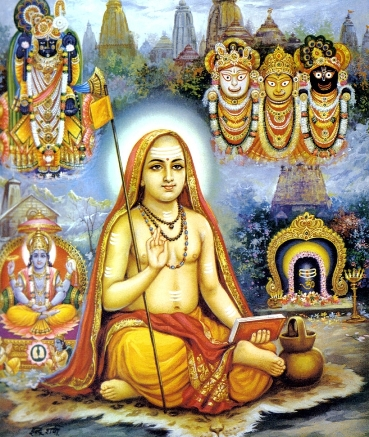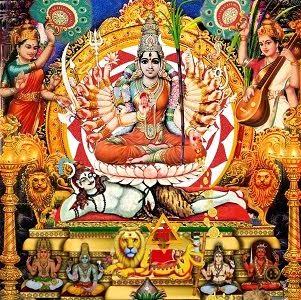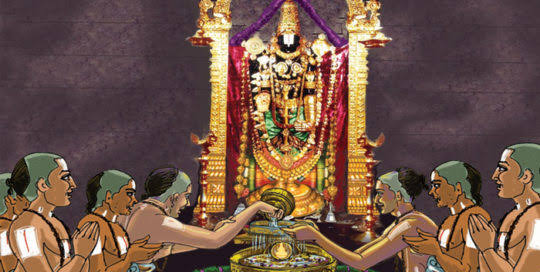
Tradition of Shanmatha By Shankara Bhagavatpada (Adi Shankaracharya) and Panchayatana Puja
At the time of Shankaracharya, people in different parts of our nation worshipped different deities.
Shankaracharya took a different approach which was in harmony with our scriptures.1/10
At the time of Shankaracharya, people in different parts of our nation worshipped different deities.
Shankaracharya took a different approach which was in harmony with our scriptures.1/10

He accepted devotion to all forms of the god because in reality everything is Brahman who is
Nirguna (without any attributes),
Nirakaara (without any shape) and
Nirvikaara (without any change).
Nirguna (without any attributes),
Nirakaara (without any shape) and
Nirvikaara (without any change).
Vedanta talks about the same Brahman.
All forms are true only at empirical plane of reality while in the absolute plane of reality everything is Brahman who is eternal, infinite & pure bliss.
One can devote himself to any form of that supreme as long as one attains a pure mind
All forms are true only at empirical plane of reality while in the absolute plane of reality everything is Brahman who is eternal, infinite & pure bliss.
One can devote himself to any form of that supreme as long as one attains a pure mind
Shankaracharya established a system of worship known as Shanmatha. Shanmatha is a tradition in which six main forms of deities are worshipped.
They are Shiva, Vishnu, Shakthi, Ganapathi, Kartikeya and Surya.
They are Shiva, Vishnu, Shakthi, Ganapathi, Kartikeya and Surya.
In this system of worship all deities are given equal importance and there is no supremacy of one form over the other. Even today Shanmatha is practiced by majority of the people in our nation.
This system greatly contributed to reduce the conflict between the people who fought to establish the supremacy of their deity. Shanmatha brought all the people under a common roof by providing equal importance to all forms of that ‘formless supreme’.
This was a simple way adopted by Shankaracharya to unify people of our nation. Hence S. Radhkrishnan calls Adi Shankaracharya as a Grand Social Idealist.
Panchayatana Puja consists of worshipping five deities of Hinduism viz - Ganesha, Shiva, Vishnu, Devi and Surya.
Panchayatana Puja consists of worshipping five deities of Hinduism viz - Ganesha, Shiva, Vishnu, Devi and Surya.
The sixth deity, under shanmatha system, is Agni or Karthikeya, with the latter being followed currently. Adi Shankara wrote devotional stotras for five deities except Agni.
hindumediawiki.com/story.php?id=6…
hindumediawiki.com/story.php?id=6…
These forms of worship were revived by Adi Shankara. These forms of pooja were already existing. For example, Matysa Purana says
"Surya, Ganesha, Devi, Rudra and Keshava - These five deities are to be worshiped in all auspicious occasions."
"Surya, Ganesha, Devi, Rudra and Keshava - These five deities are to be worshiped in all auspicious occasions."
Similarly, the worship of these deities can be quoted from Devi Bhagavata (link)
Do worship Ganesha to remove the obstacles, Surya Deva for good health, Agni Deva for purification, Vishnu for wealth and power, Siva for knowledge and Sivani for salvation.
kamakoti.org/kamakoti/detai…
Do worship Ganesha to remove the obstacles, Surya Deva for good health, Agni Deva for purification, Vishnu for wealth and power, Siva for knowledge and Sivani for salvation.
kamakoti.org/kamakoti/detai…
• • •
Missing some Tweet in this thread? You can try to
force a refresh














